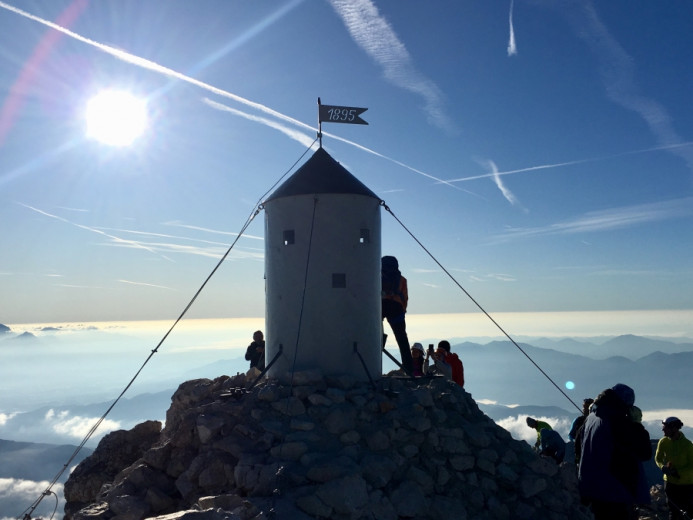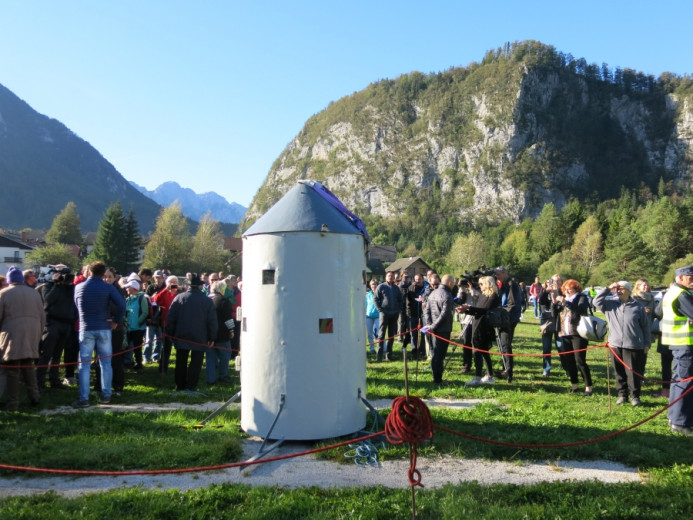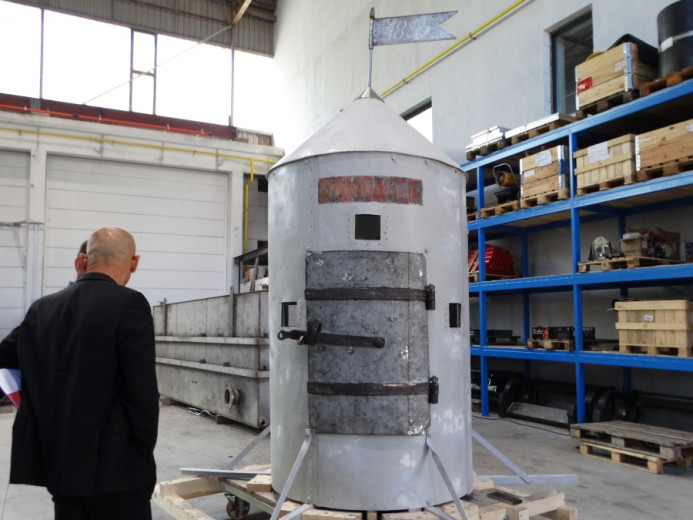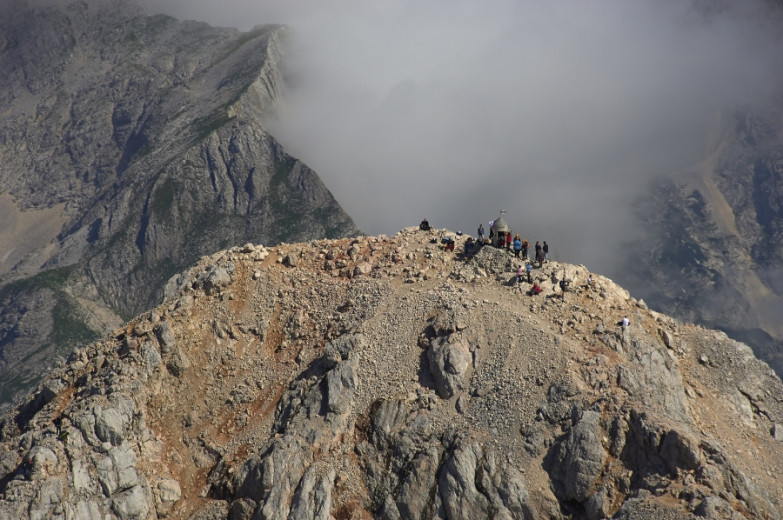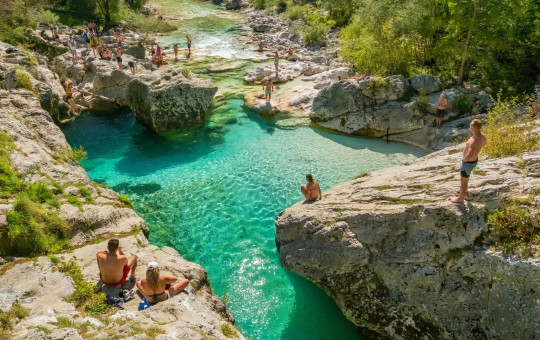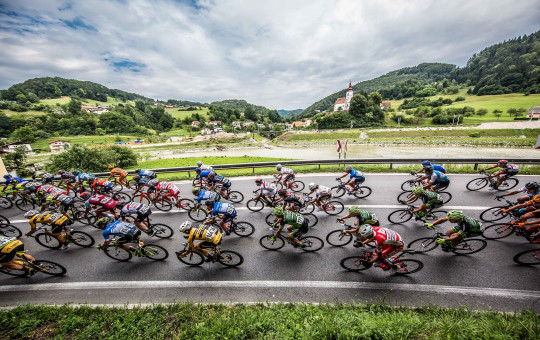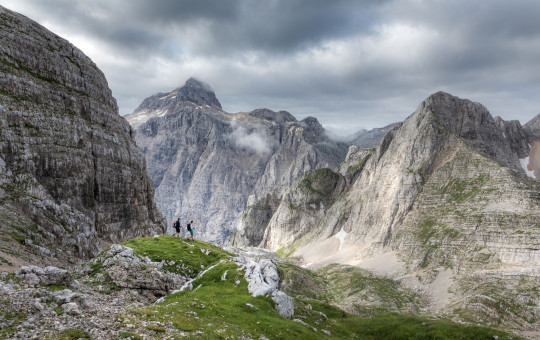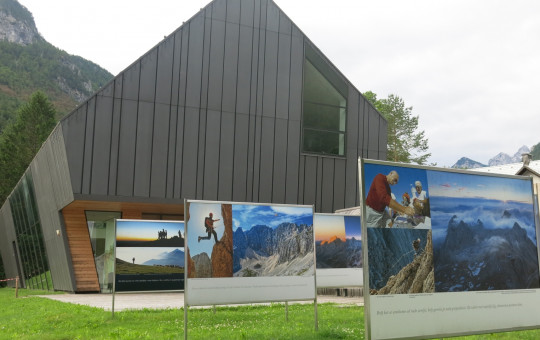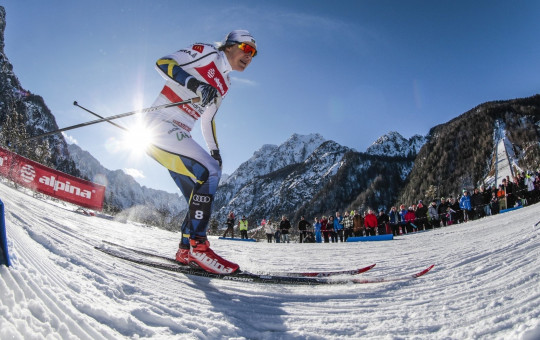August this year will mark 125 years since the Aljaž Tower was erected atop the summit of Triglav at 2864 m above sea level. During all these years, the tower has defiantly withstood the often cruel weather conditions, wars and last but not least a great number of mountaineers whose goal was to conquer the highest peak in Slovenia. Of one thing we can be sure: This metal has a soul!
Slovenia’s highest peak, located in the heart of the Julian Alps, is a mountain that has become a symbol of the Slovenian identity. Indeed, it is commonly believed that you are not a true Slovenian unless you have climbed Mount Triglav. As an enthusiastic mountaineer, Triglav was thus on my bucket list for a long time. I have always had a deep respect for the mountain, because an ascent of Triglav is not easy.
It takes approximately 6 hours to walk from the starting point at the foot of the mountain to the top; in particular, the last part is extremely challenging, regardless of the route you choose – either the one protected by steel ropes or the unprotected option. I decided to climb Triglav when I was in truly good physical condition. I was also equipped with the appropriate mountaineering gear – a helmet and a self-protection (via ferrata) kit. The feeling after you reach the summit is extraordinary, and taking a photo in front of the Aljaž Tower is a must. Moreover, the sight of the tower certainly does not disappoint.
The tower atop Triglav
The tower at the top of Triglav was erected by Jakob Aljaž, a priest and a great patriot from the village of Dovje near Mojstrana, who wanted to resist the Germanisation of the Slovenian people in the 19th century.
At that time, the Slovenian territory still belonged to the Habsburg Monarchy. As Triglav was considered a symbol of the Slovenian identity even then, the dedicated priest wanted to preserve it as such. He purchased the summit of Triglav for one Austro-Hungarian gulden with the purpose of erecting a tower there. He also designed the plan for the tower, which was then constructed by his friend Anton Belec, a tinsmith from the village of Šentvid near Ljubljana. Belec built the tower in six parts made from thick galvanised steel sheets.
The parts, each weighing from 15 to 20 kilogrammes, were carried to the summit of Triglav by six porters within one week. Unlike the land on which it stood, the tower was rather expensive, and Aljaž paid 300 Austro-Hungarian guldens for its manufacture and erection at the top of Triglav. Two original inscriptions are still visible on the tower today – the year and the name of the tower – ‘Aljažev stolp’, which was the first inscription in the Slovenian language on Mount Triglav and in its surrounding area. The grand opening took place on 7th August 1895.
The erection of the tower at the top of Triglav also had some legal consequences for Aljaž – some German organisations filed a legal dispute with the goal of demolishing the structure. After the matter was settled, Aljaž gave the tower to the Alpine Society of Slovenia, which took on the responsibility of managing it. This important society continued to maintain the tower even after 1948, when its name was changed to the Ljubljana Matica Alpine Society and the Alpine Association of Slovenia was established. Today, the Aljaž Tower is a cultural monument of national significance.
Special stories
There are many stories related to the history of the Aljaž Tower. At first, the Germans wanted to pull the tower down, but they did not succeed. After World War I, a real “painting war” took place. First, the Slovenians painted the tower in their national colours, then the Italians in theirs. After World War II, the tower was painted red, and later it was painted white as part of a film set. The results of an X-ray analysis show that the Aljaž Tower has been covered with at least a dozen different layers of colour.
Two years ago, for the first time in its history, the Aljaž Tower left Mount Triglav as it needed urgent maintenance and restoration work. The tower was transported by a military helicopter to the valley, where it was renovated by the Institute for the Protection of Cultural Heritage of Slovenia and returned to Triglav.
Until its renovation the tower was in rather poor condition, as it had never been repaired before. The restorers established that damage had not only occurred on the tower’s surface, but also to its structure. Experts repaired it according to the latest conservation standards in the controlled environment of a restoration workshop. There, the metal parts were restored and the damage to the tower repaired. In the meantime, while the tower was in the workshop, another group of experts prepared the ground and the anchor point for the tower to be set up again on the top of Mount Triglav.
The symbolic significance of the Aljaž Tower differs from that of Triglav itself, which as the highest mountain in Slovenia watches over the country. The Aljaž Tower represents the significance standing on top of Mount Triglav and lets us know that this is our Slovenian soul. And yes, when you stand there, you can feel its power. This tower, this metal structure, really has a soul.
Date: 19. June 2020
Time to read: 3 min

